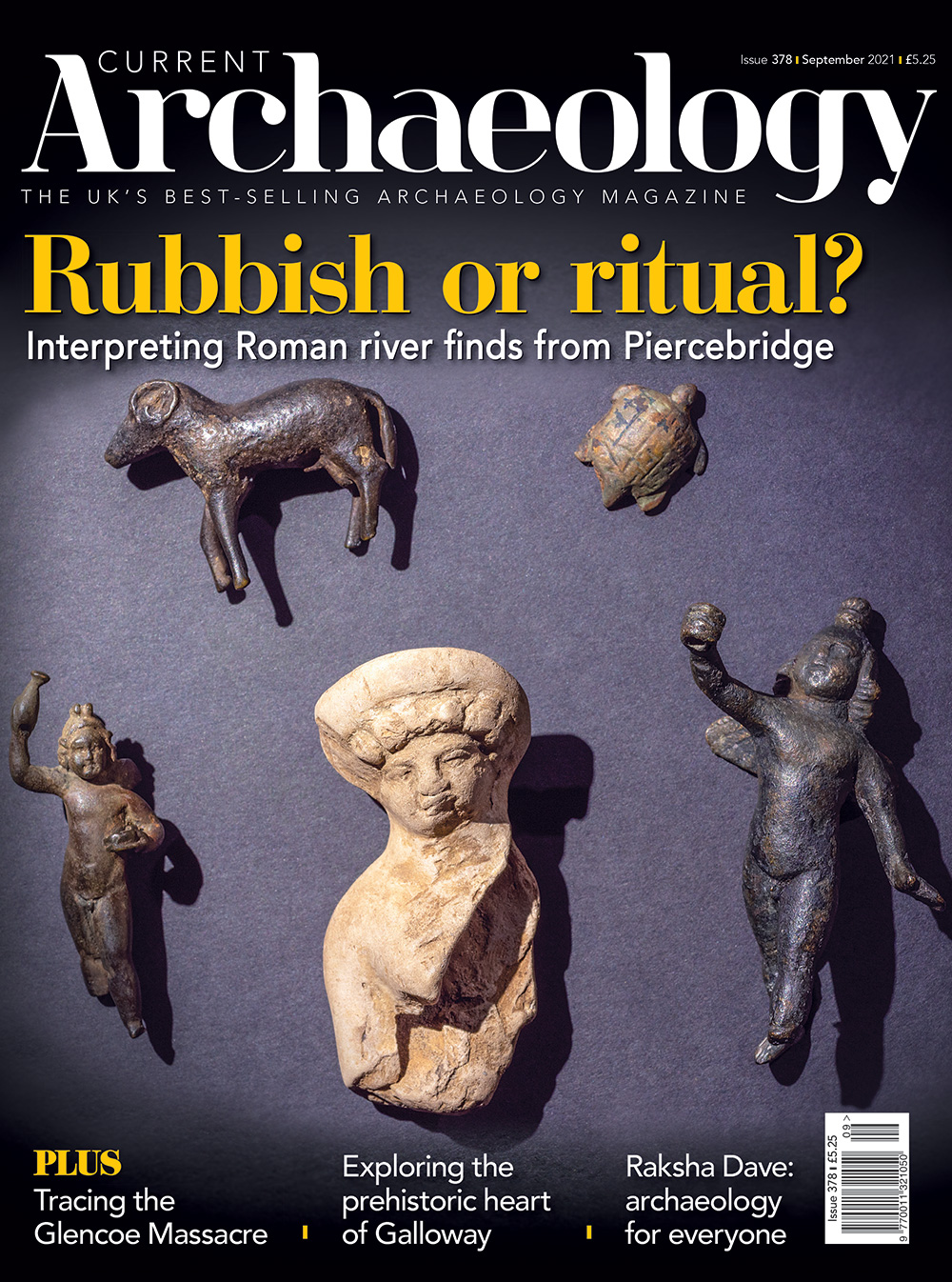Rivers can be rich sources of archaeological finds, but how can we tell why an object was consigned to their waters? Our cover feature considers some of the more than 3,600 Roman artefacts recovered from the Tees at Piercebridge, near Darlington. Do they represent ritual acts or discarded rubbish – and how can we distinguish between the two?
From waterways to roads, our next feature takes us to Dunragit, where the construction of a bypass has given archaeologists a linear snapshot of human activity spanning c.8,000 years – including what may be the earliest Mesolithic structure yet found in south-west Scotland.
Heading further north still, we next visit Iona in the Inner Hebrides. This important early Christian site was once adorned with numerous ornate stone crosses. Many were destroyed in the 17th century, but research centred on a replica of the Cross of St John has illuminated innovative aspects of the 8th-century original’s design.
Our fourth feature focuses on the highland village of Glencoe, which is surrounded by stunning mountain scenery but is also synonymous with an infamous massacre in 1692. What has recent fieldwork by the National Trust for Scotland revealed about surviving settlement evidence from this time?
Finally, this month, instead of the usual ‘In Focus’, we have two pieces looking at key issues facing UK archaeology today. Hugh Willmott addresses the planned closure of the University of Sheffield’s Archaeology department, while Raksha Dave – newly appointed president of the Council for British Archaeology – discusses how to dispel myths about the profession and make archaeology as accessible as possible.

